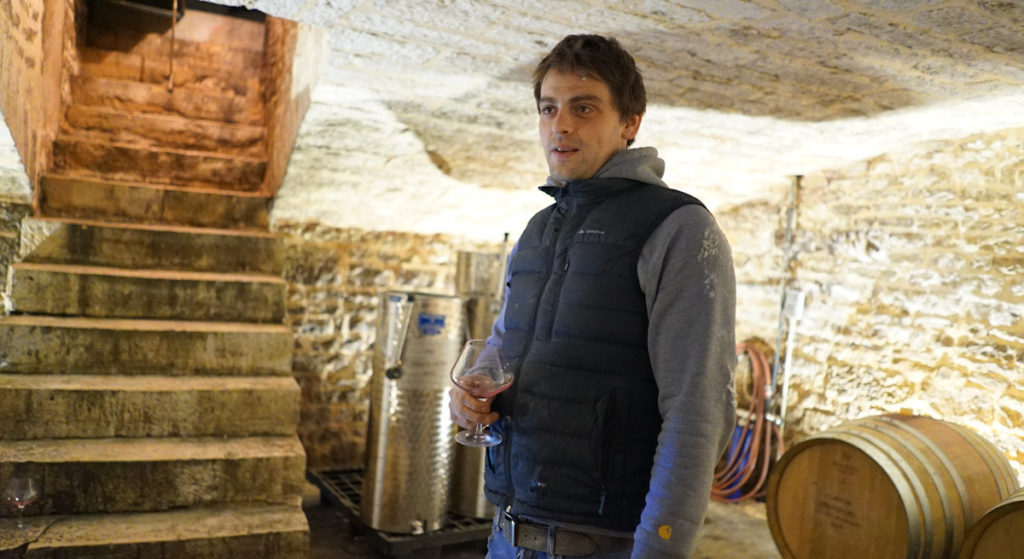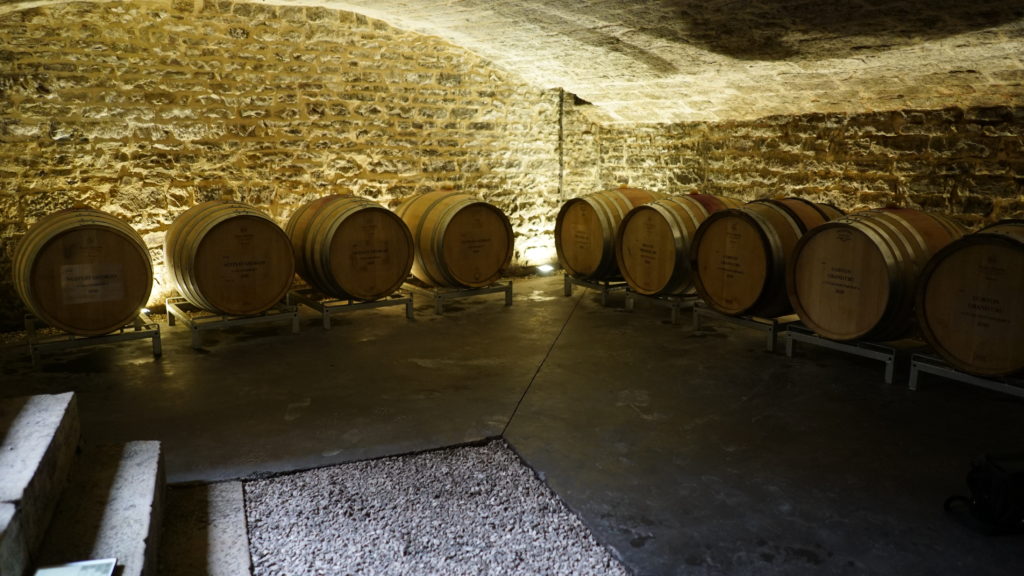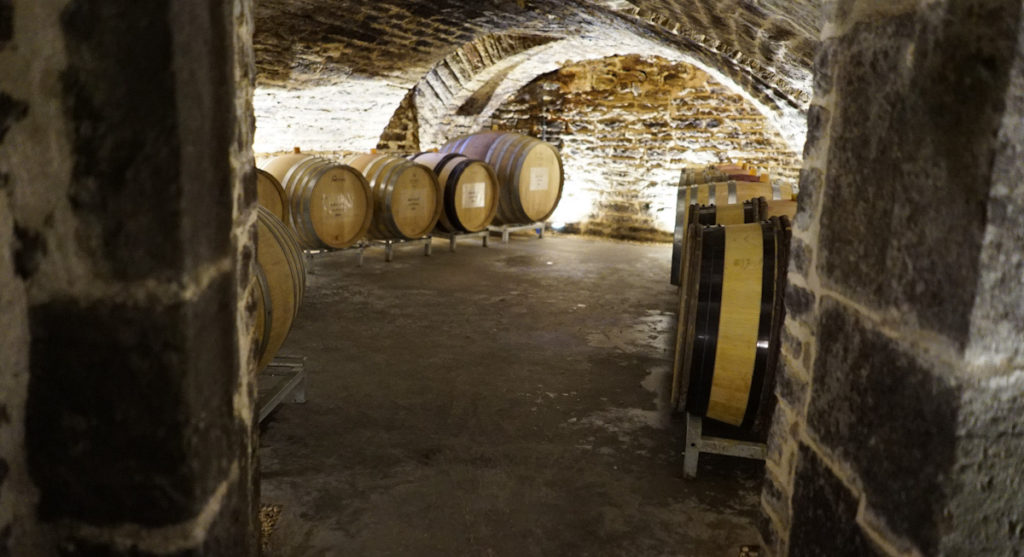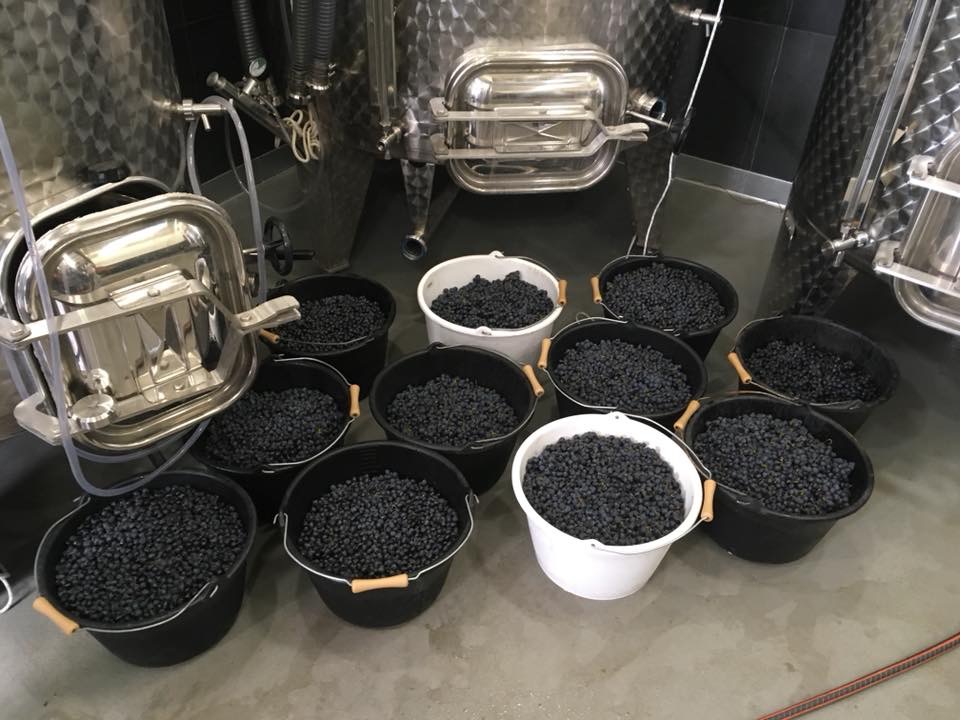Moron-Garcia is one of the estates I follow closely, as I have good connections to it and therefore the opportunity to taste the wines several times a year.
I have the same luxury with Domaine Comte Georges de Vogüé, and to a certain extent also with Morey-Coffinet and a couple of very fine domaines in Vosne-Romanée.

This is a great treat, and is what gives one the insight and experience needed to evaluate a vintage more accurately.
My first tasting of Domaine Moron-Garcia’s 2020s was during a winter break in early February. I’m now back to taste the wines mid-May to evaluate them at a more finished state.
I have written in depth about Moron-Garcia before – check out the 2019 article here.
2020: new vintage, new impressions
During my time in Burgundy this year, I have tasted quite a few 2020s. It’s still early days to take a truly accurate temperature of this vintage, but it has allowed me to get a bit under its skin and get to know its main structural components.
I’ve sampled most of the line-up from Thibault Morey, several wines at Domaine Comte Liger-Belair with Louis-Michel Liger-Belair, and the full range from Jean-Pierre Guyon in Vosne-Romanée.
There have been quite a few other 2020s along the route, just to feel the juice, and the vibe in the cellar. So at this stage I’ve quite a good base from which to begin forming an opinion!
The 2020 reds feel “cooler,” and a more classic breed than the ’19s, although to call it cool or classic in the historical scheme of things is perhaps a step too far. But in the context of global warming, it is a cooler vintage, despite the summer drought and heat almost sending it up in flames. The yields are in some places dramatically low – approaching 10-15 hl/ha in some terroirs – so expect to fight for the precious bottles. The result is intense wines with quite pronounced acidity.
So the wines feel cooler and more classically structured than the 2019s, the acidity is higher, and they feel quite a bit firmer. Finally, the low yields give the 2020s a rather substantial feel. Perhaps a bit more serious? Perhaps a bit more classic than the exuberant display of sensuality shown by the 2019s? Perhaps.
Some vignerons are reminded of the 2010 vintage, one of my all-time favourites. But in reality, 2020 is hotter – a hot 2010, though I’m not really sure I can conceptualize this description.


It appears more succulent in the fruit than the ’10s, with some growers suggesting a hint of 2012. But let’s wait and see.
The bottom line is that the 2020 wines have an effortless, cooler feel, with a strongly founded impression of fruit, structure, and style. This is in contrast with the sensual and temperamental 2019s, with their charming vivacity and slightly elusive acetates.
A new vintage of the century?
Hardly! The question is however: Do you like wines with a cooler expression? Or do you prefer the hedonistic sensuality of the 2019s?
I like both, but some growers seem to prefer the ’20s just now, hence underlining the assertion that it can also be a very good vintage.
Tasting wines at Comte Liger-Belair, Jean-Pierre Guyon, P-O Garcia, and Thibault Morey made me sometimes question my own my preferences.
The somewhat sturdier wines from 2020 are certainly exciting in their apparent coolness. Will this remain during elevage and bottling? Time will tell.
At this early point, my nod (relatively clearly) goes to the 2019 reds – and the 2020 whites. But it is very, very early.
And note: I believe the 2019s will pick up freshness and structure in the cellaring progress. It is a truly great vintage.
Explaining baie-par-baie
It seems like hand-destemming – baie-par-baie and other variants – is getting more and more popular in Burgundy.
Pierre-Olivier Garcia employs a special technique whereby approximately a third of the berries in the top wines are removed from the stems by hand, grape-by-grape, with a pair of scissors to ensure whole and undamaged berries for vinification. The result is the most delicate and beautiful berry caviar.
The share of baie-par-baie berries is currently fixed at around a third, as this is considered optimal. But it is possible to use less or more baie-par-baie if the vinification is adjusted accordingly, according to Garcia.
The baie-par-baie grapes are then vinified with whole-cluster bunches and machine-destemmed berries. They are arranged in layers in the tank: whole clusters on the bottom, then baie-par-baie, and on top machine-destemmed berries. The layers are separated by CO2 to ensure the intracellular maceration starts in the two bottom layers of whole-cluster and baie-par-baie grapes.

The baie-par-baie method is unusual and very time-consuming. However, the resulting wines are of indisputably exciting quality.
In my opinion, this technique encourages more highly perfumed aromas that are very detailed with precise notes of roses and other floral components. This gives a special, delicate complexity to these wines. Beauty is on the palate of the beholder – and I find this very interesting and hedonistic.
Let’s taste
First up was the Domaine Moron-Garcia Aligoté 2020, as usual. This is a magnificent Aligoté, tremendously lively and aromatic from very old plantings (80- to 100-year-old vines in Fixin). More linear and structured than the 2019, this is very intense and delicate, the intensity with the classic anise tone and a discreet, creamy butterscotch note so typical of Moron-Garcia’s Aligote. For me, the domaine’s best Aligote so far!
(Drink from 2023) – Good (88-89p) – Tasted 15/05/2021 – ![]()
The Domaine Moron-Garcia Brouilly La Folie 2020 is from down south in Beaujolais, thus gamay. This is crystal clear and transparent with, on the nose, blackcurrant/blackcurrant buds, lilacs, and pink roses. It is delicate and gorgeous, with lovely acidity creating lightness and airiness. Better than the 2019? Hard to say… But this is decadent with its more prominent acidity.
(Drink from 2022) – Very Good (88p) – Tasted 15/05/2021 – ![]()
The Côte de Nuits Villages 2020 is made with 50% whole clusters and 50% destemmed grapes. The whole-cluster grapes start an intracellular, carbonic maceration before joining the yeast-driven fermentation. Despite lacking the baie-par-baie element, this process does in a small cuvee (one cask only) create some tremendous floral elements – notes of peony, rose and lilac. The acidity is fresh and vivid; a tremendous wine.
(Drink from 2026) – Very Good (88-89p) – Tasted 15/05/2021 – ![]()
The Domaine Moron-Garcia Marsannay Clos du Roy 2020 is slightly closed, but still oozing red roses and rose leaves. It also offers deep red fruit – raspberries especially – with some notes of clover and violets. This cuvee comes from the northern end of the appellation (Chenove), and is currently lacking a bit of the exuberance and decadence found in the 2019 version.
(Drink from 2029) – Very Good (88-89p) – Tasted 15/05/2021 – ![]()
The Domaine Moron-Garcia Bourgogne Les Maladieres 2020 is one of the rarest and most exotic red Bourgognes on the Côte. The nose is brimming with petals and flowers of dark, red, classical roses, vivid and crystal clear, with a hint of lilac and an unheard-of complexity for this level. Airy, very intense, and delicate, only a half-barrel (feuillette) was made, but what a floral joy! Made with a third each of baie-par-baie, whole-cluster, and machine-destemmed grapes.
(Drink from 2024) – Very Good (89p) – Tasted 15/05/2021 – ![]()
The Domaine Moron-Garcia Nuits-Saint-Georges Les Grandes Vignes 2020 is from Premeaux, right next to Comte Liger-Belair’s holding. This has a notch of hedonistic decadence, and is exuberant and extroverted. Green rose leaves and rose petals precede almost an explosion of rose aromas jumping from the glass. It has boysenberries on its sweetish Premeaux palate – a vinous, silky feel offering real hedonistic pleasure. Again, a third each baie-par-baie, whole-cluster, and machine-destemmed grapes.
(Drink from 2029) – Very Good (89-91p) – Tasted 15/05/2021 – ![]()
The Domaine Moron-Garcia Nuits-Saint-Georges Saint Juliens 2020 is a new wine in the line-up, and one of my favourite village wines from the northern end (the Vosne side) of Nuits. It’s slightly reduced, but that quickly blows off, and the wine shows the usual rose bouquet from a baie-par-baie cuvee. It has deep pink roses and expressive rose flavours accompanying the red-fruit notes of its mildly stony terroir. This always has a cheerful, sensual expression. Again: 1/3-1/3-1/3.
(Drink from 2030) – Fine (90-91p) – Tasted 15/05/2021 – ![]()
The Domaine Moron-Garcia Nuits-Saint-Georges Les Charmois 2020 is also shining in this vintage – many wines are. It too is made from a third each of baie-par-baie, whole clusters, and machine-destemmed berries. The nose has a very delicate, deep, and red-rosy fragrance. It’s rich, airy, and velvety, with cloudberries showing up. Quite light-footed – the vinification is sharper – but for me the 2019 version has the (slight) upper hand.
(Drink from 2030) – Fine (90-91p) – Tasted 15/05/2021 – ![]()
You need to login as a Premium subscriber to read the rest of this article. If you are not a Premium Subscriber, use the subscribe function and sign-up.

 - A true vin d’émotion – a Burgundy of passion
- A true vin d’émotion – a Burgundy of passion - A truly hedonistic wine – lively and enjoyable
- A truly hedonistic wine – lively and enjoyable - A vivacious wine for pure indulgance
- A vivacious wine for pure indulgance - A Vin Vif - fresh, energetic and with a light appearance
- A Vin Vif - fresh, energetic and with a light appearance
Leave a Reply
You must be logged in to post a comment.